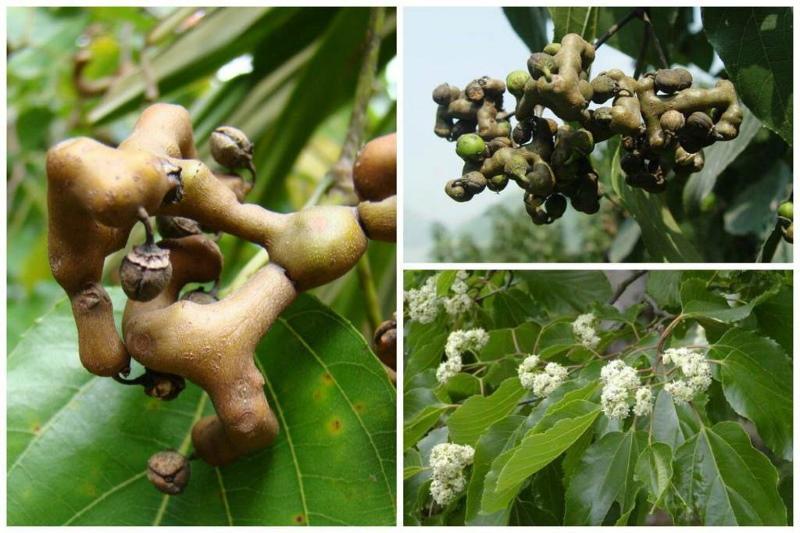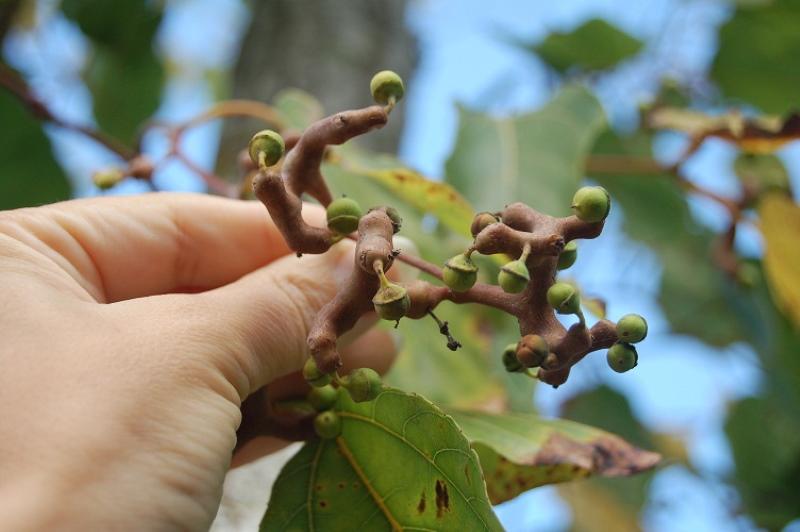Candy tree - photo and description of an unusual culture
 Its fruits are used in Tibetan medicine for the preparation of medicinal potions, they are also highly valued by culinary experts and used for many recipes. And exotic flower growers grow this plant for the sake of a chic decorative look, especially during flowering. This is a candy tree, the photo and description of which is not known to everyone. In our country, it is still a curiosity, although it is increasingly found on the warm Crimean coast. And the heat-loving nature of this culture, originally from Japan, allows you to decorate your home with it and grow it in a pot, admiring the delicate and abundant flowering and getting a delicious harvest.
Its fruits are used in Tibetan medicine for the preparation of medicinal potions, they are also highly valued by culinary experts and used for many recipes. And exotic flower growers grow this plant for the sake of a chic decorative look, especially during flowering. This is a candy tree, the photo and description of which is not known to everyone. In our country, it is still a curiosity, although it is increasingly found on the warm Crimean coast. And the heat-loving nature of this culture, originally from Japan, allows you to decorate your home with it and grow it in a pot, admiring the delicate and abundant flowering and getting a delicious harvest.
Candy tree - photo and description

Govenia has beautiful foliage, colored dark green. Oval leaves are hard and rather large, up to 20 cm long and 10 cm wide. They fall off in winter. But in the summer, the tree is miraculously transformed when many fragrant creamy flowers bloom on it. They are collected in large clusters, and the diameter of each reaches 8 cm.
The candy tree is called the fasting for its sweet fruits. Moreover, these are not berries that ripen after the end of flowering, but directly the stalks themselves, on which the flowers are held. They have a thickened (up to 1 cm) and very sinuous shape and dense viscous pulp. Ripe stalks are brown and very sweet. They taste like rum sweets with a melon and raisin flavor.
Application
 Fresh stalks can be eaten straight from the branches or dried. Excellent:
Fresh stalks can be eaten straight from the branches or dried. Excellent:
- jam;
- syrups;
- candy;
- paste;
- and even wine and beer.
In addition, the stalks are used for the preparation of medicinal decoctions, tea and tinctures. They are used for colds, fever, hypertension, nervous disorders and problems with the stomach and intestines.
Growing
 Both indoor and garden candy trees need good lighting, but they don't like direct rays. The best would be to give it the west side or shade on the south windows. The soil for the tree needs light and nutritious; an equivalent mixture of sod and leafy soil with the addition of 0.5 share of sand is suitable.
Both indoor and garden candy trees need good lighting, but they don't like direct rays. The best would be to give it the west side or shade on the south windows. The soil for the tree needs light and nutritious; an equivalent mixture of sod and leafy soil with the addition of 0.5 share of sand is suitable.
In summer, Govenia feels good, but it needs high humidity. You can feed the tree with a mineral complex once a month. And for the winter, it goes to rest and prefers to be in a cool room.